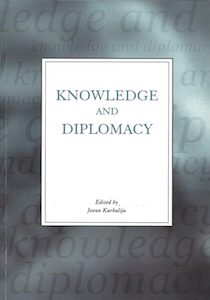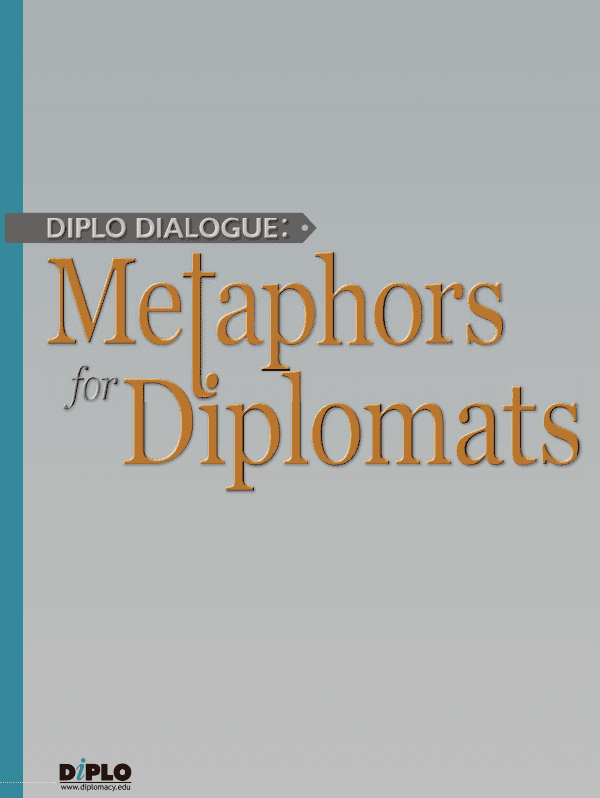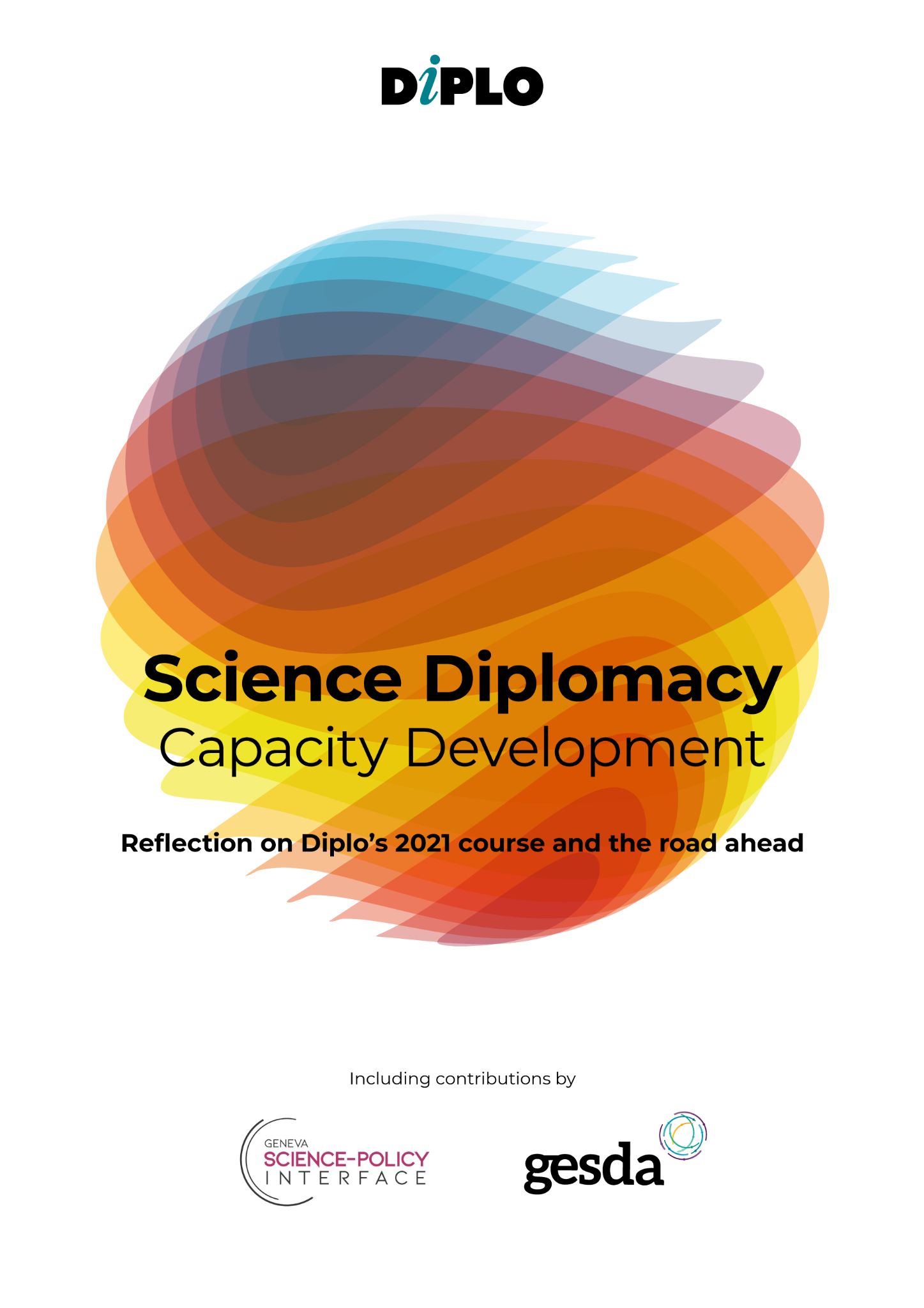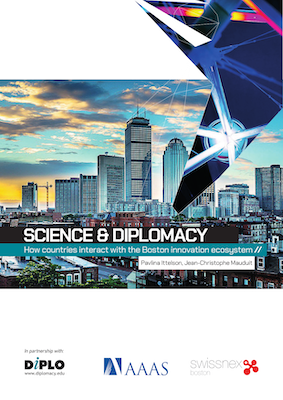Diplomatic knowledge consists of both information and other elements of knowledge. Perhaps it is true to say that diplomatic information can be distinguished from all the other elements of diplomatic knowledge by whether it is recordable. If this is so then the best recorded form of diplomatic knowledge is the diplomatic information contained in diplomatic documents.
Much greater emphasis needs to be placed on primary sources of diplomatic knowledge: on the diplomatic document. Because of the increasing glut of information, scholars, diplomats, international negotiators, international lawyers, international civil servants, journalists and other cognoscenti of international relations tend to rely on commentaries, which are, by definition, secondary. Moreover, they are known to find themselves at a greater loss on how to acquire wider unrecorded diplomatic knowledge—if they are lucky enough to realise that they do not have it!
Since only recorded diplomatic information is normally accessible, (and not always, or all of it!), it is proposed therefore to develop a method which re-integrates the primary importance of the diplomatic document. Starting from analysing the diplomatic document, diplomatic knowledge which is clearly more than the diplomatic information contained in the document itself can be gained. This method therefore not only re-asserts the primary importance of the diplomatic information in diplomatic documents but also leads to acquiring elements of unrecorded diplomatic knowledge.
First this can be done by dissecting or unpacking the diplomatic document itself, attributing clauses to their sponsors, be they domestic or international, and then drawing a balance of strategic, political and economic interests displayed. This is all carried out in a static time-frame. At a second level the time factor is introduced. In this dynamic dissection, the “diplomatic trail” of an international agreement is analysed. Diplomatic knowledge is thus undoubtedly enhanced.
Digitalisation and information technology make this method much more user-friendly, all the more imperative for a better understanding of international relations and diplomacy, as well as an essential teaching tool.
KNOWLEDGE, INFORMATION AND DIPLOMACY
Diplomats’ knowledge differs from that of ordinary citizens. The diplomat’s essential relationship to knowledge is access to other knowledge and to others’ knowledge. It is about that other knowledge. The diplomat must not only know his country’s agenda. He must also know the agenda of the other country. Most importantly, however, he must identify and get to know very well which factors at both ends can be reliably used for his (country’s) purposes. It is this third exercise which reveals the interaction between knowledge and diplomacy par excellence.
Too much diplomacy without enough knowledge may prove fatal. Too much knowledge with too little diplomacy may be disastrous. Discovering a judicious mix amounts to a basic survival kit for diplomats.
The types of knowledge the diplomat might want to access might be oral or written, public or confidential, lay or technical, past or present. Since administrative matters became more complex, masses of technical material increasingly found their way into diplomatic documents. Technical appendices however, and the best knowledge of them, do not, have not, and cannot replace diplomacy. It is the skilful juxtaposition of these technical chunks of knowledge which demonstrates the art of diplomacy.
Thus the diplomat’s real intentions, motives, and strategy would not necessarily be on file at the ministry! Moreover, the media coverage of diplomatic meetings might be even further from the diplomatic version of the truth contained in the official files. A wealth of knowledge about diplomacy and diplomats’ handling of knowledge is also maintained by way of oral tradition binding generations of diplomats together. Knowledge of this tradition sharpens the young diplomat’s critical sense of trial and error.
Elements of the old and the new can be confirmed in numerous diplomats’ biographies. But autobiographies must be taken with a pinch of salt. Even official records may be glossed over. A particular permanent secretary’s choice of which diplomatic documents to downgrade and which to highlight might not be totally disinterested. Peeling the gloss away from official documents is an essential preliminary to diplomatic analysis.
KNOWLEDGE AS INFORMATION
Knowledge is not only information. Information has the advantage of being recorded. Knowledge, in general, is not easily recorded. Knowledge as information enjoys another characteristic: it travels. However, even when recorded, knowledge as information does not flow unhindered in the real world. The free flow of information is much more of an ideal than a true picture of reality. A number of obstacles exist. Some are easily surmounted. Others are more difficult and costly, if not impossible to overcome. Many are the obstacles which still hinder the free flow of information universally.
This truth also applies to the free flow of information in the same nation state. Within the state this truth also applies to the governmental administrative apparatus itself. There is hardly a free flow of information within a bureaucracy: the mandarins know only too well that knowledge is power or influence at the very least; they do not part with any scrap of knowledge completely or all the time.
On an even more domestic level this truth is not unknown to apply within the same ministry including the foreign ministry. Perhaps this is where this truth is at its strongest: between the very members of the same cabinet or secretariat or desk. Most paradoxically these are the diplomats entrusted with the UNESCO task of enshrining the principle of the free flow of information into an International Convention!
The management of knowledge as information in diplomacy can be illustrated quite succinctly. A clear example is the case of handling relations with the United Nations organisation and its agencies. Since its foundation the UN and its Agencies have developed a veritable international bureaucracy. Their numerous initiatives in their 50-year history produced volumes of paperwork. This demands much more than what a medium sized multilateral section in a medium sized foreign ministry can manage.
However, some foreign ministries will insist on retaining total control of relations with all the branches of the UN. In these extreme cases, relations remain the foreign ministry’s domain not only with the General Assembly and its committees but also with the World Health Organisation, the International Labour Organisation, the Food and Agriculture Organisation and the United Nations Education Science and Culture Organisation to name a few.
At the other extreme, a foreign ministry will have delegated or been slowly relieved of all these particular duties by the respective health, agriculture, labour, or education ministries.
In reality a “modus vivendi” between the foreign ministry and the other ministries will have evolved somewhere in between these two extremes. Generally the foreign ministry will have kept control of what is political, though that might prove difficult to define sometimes; the ministries controlling what is eminently theirs by subject matter and keeping the relevant files.
DIPLOMATIC DOCUMENTS
Diplomacy could be circuitously defined as the activity of the diplomat. The focus of diplomacy is usually an international agreement, past, present or future. It need not be a written agreement, although it usually is. The Vienna Convention on the Law of Treaties explicitly recognises this definition of international agreements. This realistic admission helps to define the domain of diplomacy. Diplomatic activity between one international written agreement and its successor is punctuated by a series of verbal agreements which, in turn, are built upon various exchanges contained in diplomatic documents.
Form has been known to pre-occupy some diplomats unduly. Form has also pre-occupied a number of scholars and writers about diplomacy. In Sir Ernest Satow’s classic work, A Guide to Diplomatic Practice, diplomatic documents are categorised. Thus diplomatic documents could contain demands or offers as in a Memoir and in an Aide-mémoir, or in the more official Note verbale, signed or unsigned, or in other diplomatic Notes. Once agreement is reached in part or in toto this is either implicit or explicitly stated as in an exchange of Notes verbale constituting an international agreement.
The more manifest form of an agreement could be held to start with an agreement initialled between lower officials “ad referendum” to higher governmental authority. Diplomatic documents range in importance from the unofficial Procès-verbal of a meeting, to Protocols, to Treaties. Similarly, Sir Harold Nicholson’s reference work Diplomacy also classifies diplomatic documents.
Is a hierarchical order of diplomatic documents useful or necessary? By giving more or most importance to fully fledged treaties and the least importance to the modern “non-paper” a diplomatic primer for students is at hand. But is this enough?
This traditional method of assessment of diplomatic documents does not really contribute much to knowledge. It does not amount to proper diplomatic analysis. It is superficial as it only treats diplomatic documents at face value. Students emerge all the poorer for it, obsessed with form for form’s sake.
DISSECTING DIPLOMATIC DOCUMENTS
Instead, it is proposed to dissect diplomatic documents. This should enable students of diplomacy—as well as diplomats themselves—to sharpen their sense of diplomacy by developing analytical diplomatic talents. However greater the complexity of the data of their future cases these can be crunched better with these more mature analytical diplomatic talents. Dissection of diplomatic documents can take place on a number of different levels. Dissection results open up more fruitful dimensions of analysis.
First, the “balance of interests” approach: a diplomatic document concluded between two governments, say an international agreement of ten paragraphs, can be dissected by unpacking it into its substantive points. This unfolding can then be developed further by attributing paternity to each of the various inputs into the treaty. Inputs may be whole articles, paragraphs, clauses or sub-clauses of the agreement. They may also be side-letters, ancillary exchanges of Notes-verbale, Agreed Minutes of interpretation etc. Usually paternity corresponds to the interests of a particular government. Each input is thus tagged according to whose interest is best served by it. Which party secured, input by input, more plusses and least minuses, for its national interest? The balance of interests is thus the result of a rough quantification of each side’s score.
In trying to attribute points to the two sides then, not only will the number of clauses count. Further refinements of this diplomatic analysis are in order. Definitions and meanings of each input will have to be re-assessed. It will be necessary to assess, for example, whether a favourably tagged clause was seen in one country to count for more than one clause in the given circumstances. In other words, whether a degree of diplomatic ambiguity in meaning in a particular clause—or even a single word—gave it a different value in the two different countries.
See, for example, the concession of UN Secretary General Kofi Annan to Iraqi Deputy P.M. Tariq Aziz in paragraph 3 of the 23/2/98 Memorandum of Understanding that UNSCOM would respect the “dignity” of Iraq; a term which means much, much more in Arabic than in English.
This method of analysis might, at the limit, be totally irrelevant in, say, a treaty of unconditional surrender. There is hardly any “balance” of interests there. Without resorting to such far-fetched examples is this method of analysis useful in contemporary diplomacy?
There is hardly any balance of interests noticeable in a number of standard treaties. Take, for example, standard treaties on visa abolition, cultural and sports cooperation, and the like. When a standard treaty contains a clause or two bearing only one party’s interest then there is a clear imbalance of interests. Indeed this provides the student with a starting point for this method of analysis.
PURSUING A “DIPLOMATIC TRAIL”
The second level of analysis of diplomatic documents is not static. It is a dynamic analysis generated by pursuing the “diplomatic trail” of an international agreement. The student will be asked to examine a national issue that overwhelmed his country’s foreign policy agenda, for example, ten years ago. This could have been an international issue which festered for a number of years. It could even have reached a crisis point before a diplomatic agreement settled the issue. Students are invited to identify and follow the agreement’s diplomatic trail. The diplomatic trail is tracked from the files and various related records kept internally in the foreign ministry.
As with a series of flashbacks in a film, this method starts from the diplomatic agreement and moves backwards in time. By studying file after file on how each paragraph was developed and bargained for, precious diplomatic knowledge is gleaned. Diplomatic levers are observed in action, at work, not in theory but as they were actually applied in this particular case-study. These observations will then constitute valid contributions to others’ diplomatic knowledge too.
By going right back to the start of negotiations, the students’ inside knowledge of their chosen national issue will be immensely improved. By encouraging students to refer to the actual sources in their own foreign ministry archives, gaps between folkloristic or media versions of the crisis and the real story and issues involved might be discerned much more clearly. More importantly, the student will be accessing a wealth of diplomatic knowledge otherwise buried in the archives. Actual exchanges of diplomatic notes, the various memoranda presented or not, the procès-verbales of numerous diplomatic meetings, together with the rubrics—the marginal notes in the archive files—all leading up to the final international agreement are a hidden treasure of diplomatic knowledge for any student, but most particularly for that country’s young diplomats.
The young diplomat will also be able to note whether parts of (and which parts of) that international agreement were developed properly or shoddily. This might be relevant to a corresponding exercise to discover whether parts of an agreement are more precarious than others, rendering perhaps the whole agreement unstable.
This method is also appropriate for analysing international resolutions. See, for example, the notorious UN Security Council 242 adopted unanimously on the “withdrawal of Israeli armed forces from territories occupied” after the 1967 war. As the French version had “the” territories, this encouraged the optimistic Palestinian interpretation that it included the 1948 territories too. Whether this ambiguity defuses or kindles a time-bomb remains a moot point.
It might also be possible and useful to identify the original motivations and factors causing certain clauses to be inserted into an international agreement and whether these are now redundant and superseded by events. Conversely interesting would be an analysis of why certain terms are found to be inconvenient and removed from a diplomatic document.
This is of utmost importance in the founding document, the establishment of wide-ranging long-term international initiatives. The European Union’s “Euro-Med initiative” is a case in point. Few if any analysts have been able to answer the fundamental question of why the security clauses in the preliminary editions of the Euro-Med terms of reference were dramatically downscaled. Contrast the 1994 debate realistically emphasising the security dimension which is then whittled down in the communication of the EC Commission COM (95) 72 and finally disappears in the Council of Ministers mandate (10/4/1995).
Similarly useful would be to study whether meanings originally attributed to particular sections of the agreement (if not to the whole agreement itself) have changed by force of circumstance; whether the old meanings had been revalued or devalued by the new meanings evolved.
Other nuggets of diplomatic knowledge could be found in unutilised drafts of treaties or parts of them. They might have been discarded as too hot or because of domestic political rivalries, though still appropriate. Or they could have been abandoned out of neglect just because of changes of personnel or changes of circumstances. Undoubtedly they remain invaluable if brought back into circulation as diplomatic knowledge for potential use. Similarly enlightening would be the commentaries or inputs received in correspondence from the ambassadors and embassies involved directly.
DIGITALISED KNOWLEDGE, INFORMATION AND DIPLOMACY
Digitalisation has changed a lot of this: not everything, but a substantial number of critical matters have altered, some for the better, others for worse. What has not changed is the need for diplomacy, for its style, its human factor.
In other words, digitalisation, like other historic advances in transport and communications, is yet another tool in the diplomat’s arsenal, not his replacement.
- In dissecting a diplomatic document in digitalised form at the ministry, the paternity exercise is made simpler through hyperlinks. The score of each side in the simple two party negotiating model where all inputs clear instantly into the final agreement is thus more easily arrived at. Standard treaties. Databases have already been developed for them thus permitting diplomats to avoid the task of re-inventing the wheel. They only have to add the few relevant, if any, additions or amendments to make the particular treaty as tailor-made to their country at that particular moment in time as possible.These “standard treaties” are unlike and in sharp contrast to totally customised treaties arising out of a particular crisis. (See the Exchange of Letters between Tariq Aziz and Kofi Annan 13/11/1998 and pursue its “diplomatic trail”.)
- Following the “diplomatic trail” in digitalised form is also made easier, in the more complex model where the two parties take time, rack their adviser’s brains and strain the general public’s tolerance, disturb NGO’s patience and wreck MNC’s cash-flows. Here all these inputs are available, can be accessed quicker, if not immediately, and given their relative weighting much more precisely than before. This is a research luxury compared to the previous position where one would have had to compare different files kept in different ministries or libraries. At the more textual level, the trade-offs occurring between clauses as the final agreement is developed can be recorded more easily and influencing factors noted. Also, compromise formulae can be shown to have been derived from their parent clauses, according to or even against given written advice as the case may be.
- Organisation. Digitalisation with its networking possibilities has vastly helped to overcome the inter-ministerial, inter-departmental or inter-agency problem. Where is the file? Who has the file? are (should) no longer remain a problem. Modern foreign ministries supervise other ministries’ conduct of foreign relations with, for example, UN Agencies, by dividing responsibilities on a regulator/operator basis.
- The human factor. However it remains doubtful to what extent digitalisation will be a perfect substitute for the human factor. Style, to put it mildly, is rather cramped in digital form. On the other hand, can cyber-sex be too far from boudoir diplomacy? Influence, charm, bloody-mindedness, bluff, are factors not easily conveyed in full on the Internet, though approximations have been recorded already.
- Rubrics. The internal preliminary diplomatic discussions by e-mail now recorded, and immediately available, are a further rich source of diplomatic knowledge. Their instant hyper-links replace the value of rubrics in old files. Moreover, the advantage of opening up a draft or final diplomatic document for comments and discussion between the diplomatic community (existing and retired) are a boon for distance learning via the Internet. They will be a further recorded source of diplomatic knowledge.
To conclude, the method sketched only in outline here demands further development to increase the opportunities for diplomatic solutions as alternatives to the use of force.








